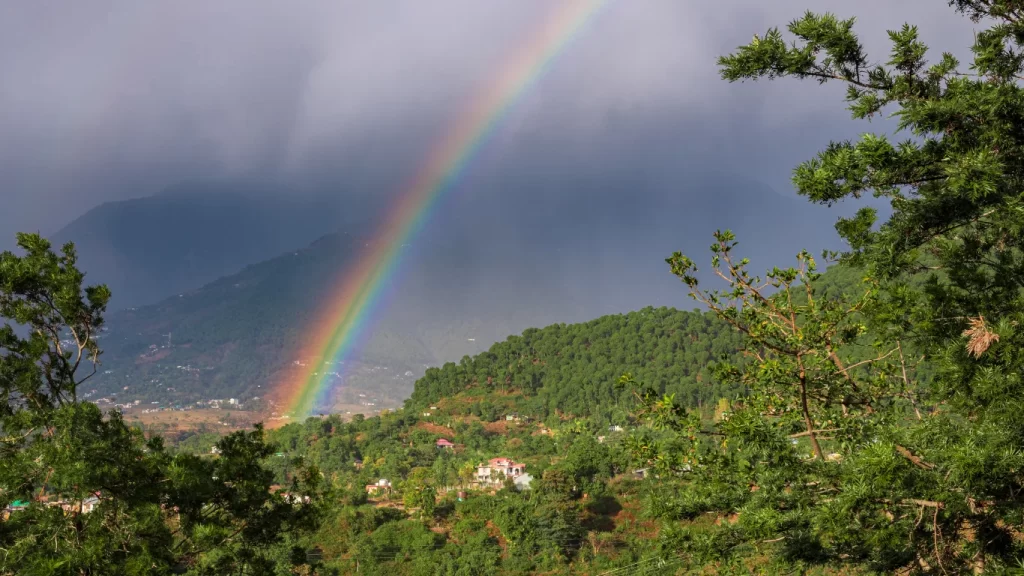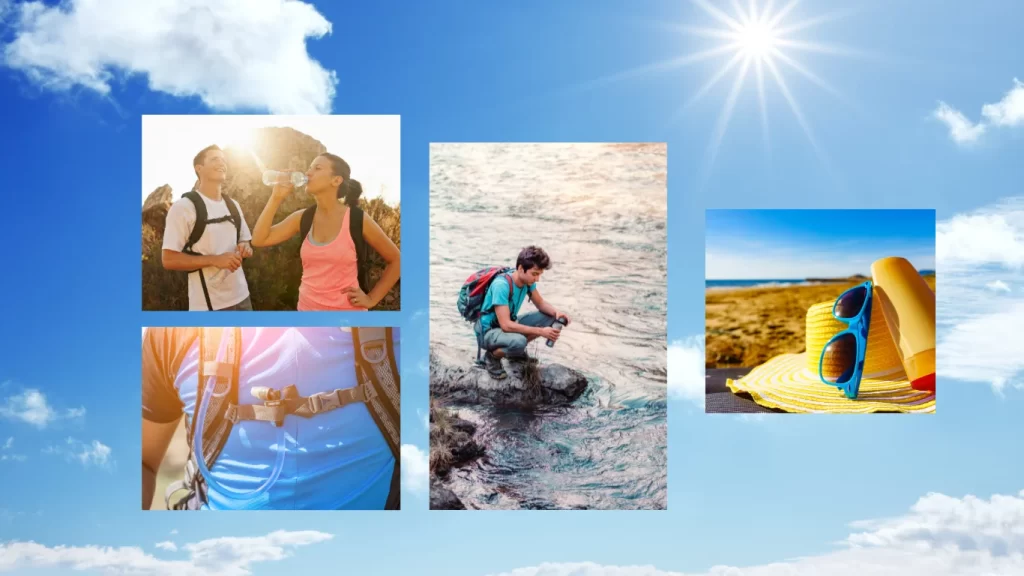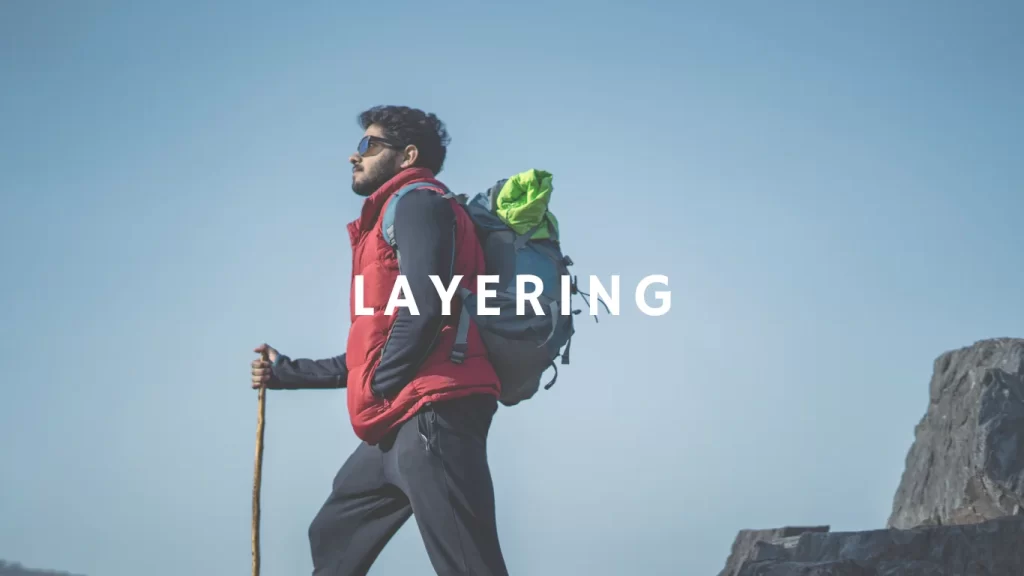Hiking is not just a summer activity; it’s a year-round adventure. That’s why having the right seasonal hiking tips at your fingertips is crucial, no matter the weather. From navigating slippery spring paths to conquering snow-covered peaks, the proper preparation can make all the difference.
In this article, we’ll cover the essentials of year-round hiking preparation, including spring hiking preparation to manage renewal and rain, the joys and cautions of hiking in summer, the serene beauty offered by fall hiking tips, and crucial winter hiking advice to handle snowscapes and safety. Expect to learn about adapting your hiking gear for seasons, overall tips for hiking, understanding weather-specific hiking tips, and overcoming seasonal trail conditions.
Spring Hiking: Renewal and Rain

Reflecting on early hiking experiences, it’s common to prefer ideal weather conditions, shying away from the unpredictability of rain. However, embracing varied weather conditions, including rain, can enrich the hiking experience, offering moments like the magic of a post-rain rainbow.
Spring Hiking Preparation
To effectively manage hiking in wet conditions, wearing a rain jacket with a stiff peak or combining a lightweight jacket with a peaked cap can prevent rain from obstructing your vision and soaking your face. It’s also wise to have high-calorie, easy-to-eat foods to maintain energy without cooking in the rain. Choosing the right shelter and site is vital; avoid areas that could lead to water pooling near your sleeping area.
Proper layering: develop a system that lets you stay dry and warm without frequently changing clothes in the rain. Embracing all weather types enhances your skills as a hiker and diversifies your experiences on the trail.
Summer Hiking: Heat and High Altitudes
Staying adequately hydrated is crucial during summer hikes, particularly under the scorching sun, which can increase dehydration risks. Carry plenty of water, enhanced with electrolytes, to replenish the minerals lost through sweat. It’s wise to ‘Camel up’ by drinking a litre or more before starting the hike, ensuring a well-hydrated start.
Hydration and Sun Protection

Wearing long sleeves, hats, and applying sunscreen are essential for protection against the sun, especially at higher altitudes where UV exposure increases. Opt for light-coloured clothing to reflect rather than absorb heat, and consider a wide-brimmed hat over a cap for better head coverage.
Choosing the Right Time of Day to Hike – Hiking in Summer
To avoid the peak heat times, starting the hike early in the morning or later towards evening when temperatures are cooler is advisable. For experienced and well-prepared people, night hiking under a bright moon offers a cooler and unique hiking experience.
Fall Hiking: Foliage and Cool Temperatures
Layering Strategies – Fall Hiking Tips
In the fall, mastering the art of layering is key to staying comfortable while hiking. Start with a moisture-wicking base to keep you dry, add a mid-layer for warmth, and over that, a wind and water-resistant outer layer for unpredictable weather. This combination ensures you are prepared for any drops in temperature or unexpected rain showers, which are expected during the fall season.
Safety Considerations for Shorter Daylight Hours
As daylight diminishes in the fall, it’s crucial to plan accordingly. Start hikes earlier in the day to ensure you can return before dusk. Always carry a headlamp or flashlight with fresh batteries, as days can darken quicker than anticipated.
Winter Hiking: Snowscapes and Safety
Staying dry is crucial in winter. Adjust your layers frequently, especially when transitioning between different elevations or exertion levels. Consider using gaiters for traversing deep snow.

The right clothing layers are critical for comfort and safety during winter hikes. Start with moisture-wicking base layers, add insulating mid-layers, and use a waterproof, breathable outer layer like Gore-Tex. Don’t forget to wear waterproof and insulated winter hiking boots to protect against the cold. Carrying microspikes and snowshoes adjusts to varying trail conditions and enhances stability.
Navigating Snow-covered Trails
Navigating in snow requires careful preparation and the right tools. GPS devices and apps like AllTrails are helpful but always have a backup like a traditional map and compass. Be aware of your surroundings and adjust your route based on the visibility of trail markers and the depth of the snow. For safety, always carry emergency communication devices.
Closing Thoughts – Seasonal Hiking Tips
Through this seasonal hiking guide, we’ve reviewed the seasonal landscape of hiking, uncovering the importance of preparation, adaptation, and respect for nature’s diversity. Seasonal hiking challenges are common but with the proper knowledge, gear, and a respectful approach to the environment, you can enjoy the great outdoors year-round, finding beauty and adventure in every step. Embrace the journey, and let the trails guide you through the rich tapestry of seasonal hiking.
What are the optimal seasons for hiking to avoid crowds?
To avoid large crowds and tourist groups, consider hiking during the off-season. Hiking in different seasons offer different benefits and drawbacks. Optimal times include early spring, when the weather is still cool, and throughout the fall and winter. Summer and late spring are popular tourist times, so trails are busier.
How should I prepare for a hiking trip a few days in advance?
Choose your trail carefully.
Condition yourself physically for the demands of the hike.
Pack all your hiking essentials.
Employ a 3-layer clothing strategy for optimal comfort and protection.
Ensure you pack appropriate clothing from head to toe.
Create and check off items from a comprehensive packing list.
Consider joining hiking tours for guided experiences.
Seek additional practical information as needed.
What are the essentials for packing for a week-long hike?
A medium-sized backpack (up to 40 litres) with a rain cover.
A lightweight sleeping bag.
A sufficient amount of cash.
A water bottle or hydration reservoir.
A knife for general utility.
A headlamp or flashlight.
A first aid kit for emergencies.
Garbage bags to carry out trash and maintain cleanliness.
How can I prevent overheating while hiking?
To avoid overheating during a hike, begin early. Stay well-hydrated by drinking plenty of water or sports drinks with electrolytes if you’re on a longer hike. Maintain a slower hiking pace to manage exertion and heat buildup.





